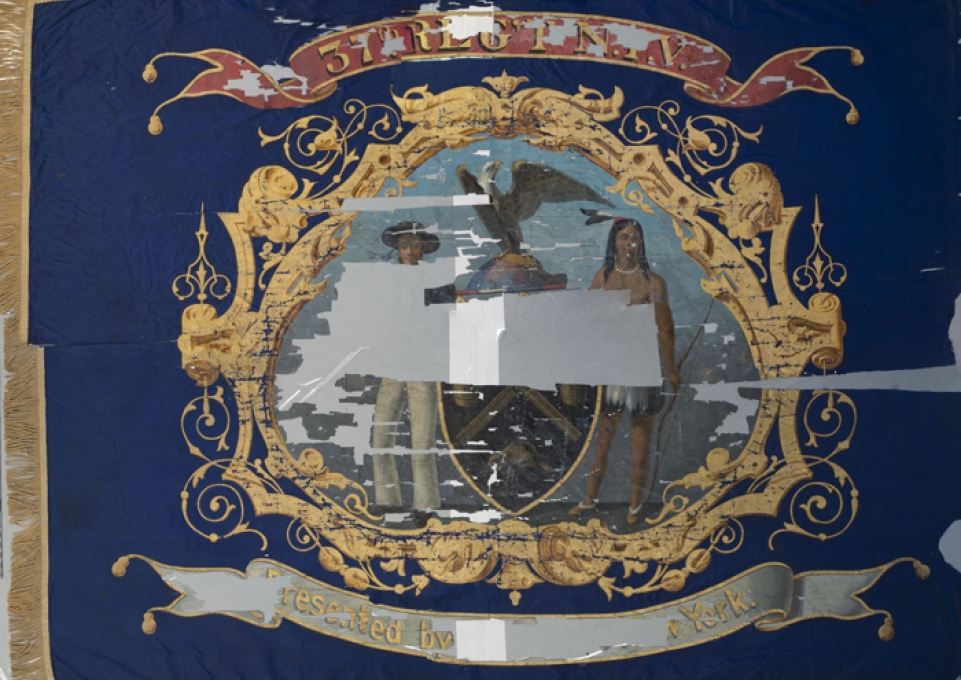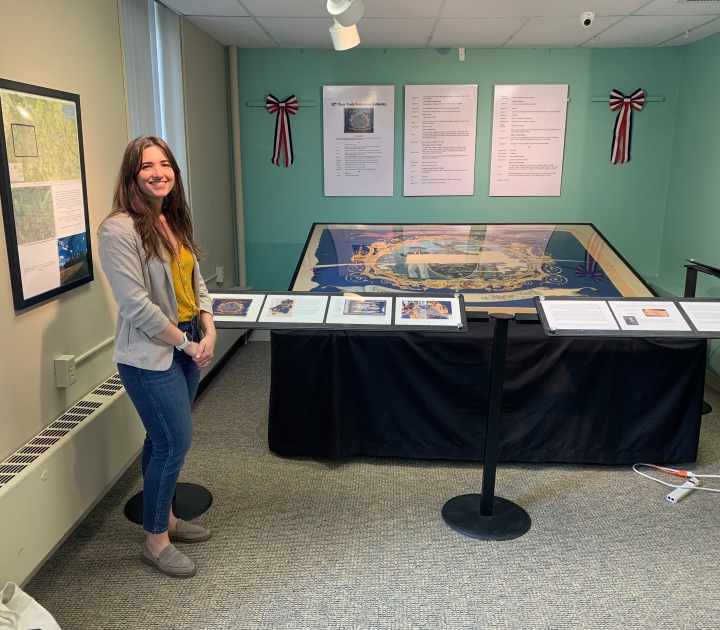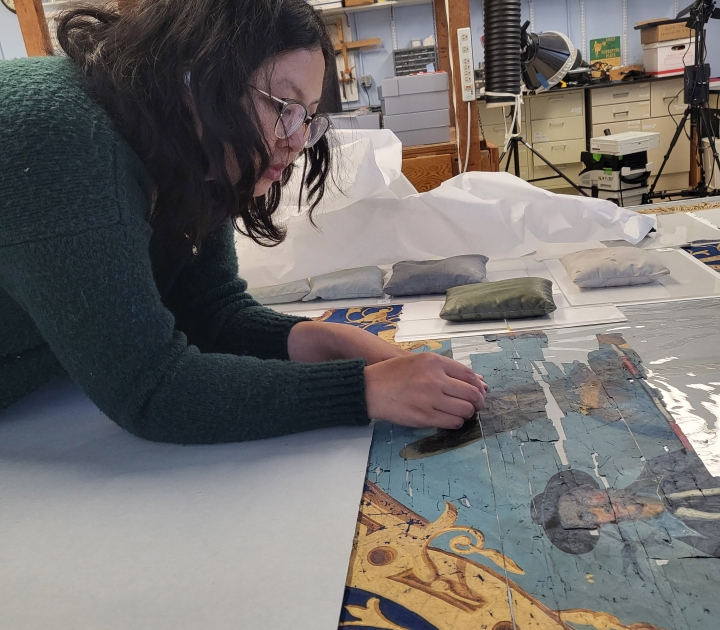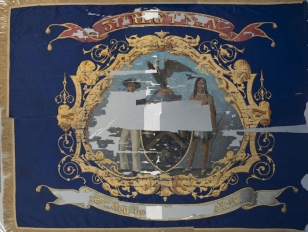
When a Civil War regimental flag belonging to the 37th New York Volunteer Infantry arrived at Buffalo State University’s Garman Art Conservation Department in 2020, it was shattered into tiny pieces.
Donated to the Cattaraugus County Museum when it was founded, the historic flag deteriorated over the years and went into storage in the 1970s. In the ensuing decades, its condition worsened.
“It was unrecognizable when it came to us,” said Fiona Beckett, assistant professor of paintings conservation. “Most people would think it was not salvageable.”
Thanks to the meticulous work of two art conservation students, Katya Zinsli, ’22, and Nhat Quyen Nguyen, who just completed her second year in the program, the flag not only was salvaged but also now serves as the centerpiece of a Civil War exhibit at the museum.
Piecing Together History: Saving the 37th NY Regimental Flag opened on May 20 and runs through the end of the year. Measuring 5 feet by 6 feet, the painted silk flag was pressure mounted into a custom-made display frame. Because of its size and significance, it may remain on display indefinitely, said Brian J. McClellan, curator with the museum.

“Initially, it was in such a mangled state, you really couldn’t see what it was. I was really pleased with how it turned out.”
— Katya Zinsli
The museum wanted the flag restored to help tell the story of an 1863 battle in Hazel Grove, Maryland, where the regiment suffered 235 casualties and the Confederates captured 100 soldiers and the flag.
“This was part of the larger battle of Chancellorsville,” McClellan said. “Two companies within the regiment came from Cattaraugus County.”
According to additional information provided by the museum, the Reverend William Stone Hubbell, then a minister at North Presbyterian Church in Buffalo, presented the flag to the Civil War veterans of Cattaraugus County in 1893. Hubbell, a member of the Connecticut regiment, discovered the flag in Richmond, Virginia, where it was hanging as a war trophy in the Confederate Senate chamber.
When the museum approached the Art Conservation Department about restoring the flag, Zinsli chose to take it on as her master’s project, which Beckett and Emily Hamilton, assistant professor of objects conservation, oversaw.
“Initially, it was in such a mangled state, you really couldn’t see what it was,” said Zinsli, who is currently serving as the Lunder Conservation Fellow in Objects Conservation at the Smithsonian American Art Museum in Washington, D.C. “At the time, I was trying to decide where I wanted my career path to go. I have a background in textile conservation and a strong interest in painting. Because of this, Emily Hamilton thought this would be a good project for my thesis.”

“I was excited because the flag presented a challenge, and it felt like such a rich part of history.”
— Nhat Quyen Nguyen
Beckett lent her painting expertise to the project. Hundreds of flags, mass-produced during the Civil War, were painted with oil or egg tempera, she explained.
“We also consulted with our connections outside of Buffalo State for the specific kind of textile knowledge that was needed for the project,” Beckett said.
Zinsli spent the 2020–2021 academic year doing scientific analysis and testing on the flag before making a treatment plan. The following year, when Zinsli left campus for her third-year internship, Nguyen completed the conservation work it required.
“I was excited because the flag presented a challenge, and it felt like such a rich part of history,” said Nguyen, who specializes in textiles, a subset of the objects art conservation track, and is slated to graduate in May 2024. “I wanted to get it right so the museum could display it.”
Other art conservation students from the classes of 2022, 2023, and 2024 also assisted.
“I was really pleased with how it turned out,” said Zinsli, who gave a presentation at the museum on the exhibit’s opening day about the conservation efforts.
“It’s always rewarding for a student to have a project included in a collection open to the public,” Beckett said. “And smaller local institutions, such as this one, really don’t have enough money to properly conserve historic pieces. It was a really nice collaboration.”
The Cattaraugus County Museum is located in the Stone House, 9824 Route 16 in Machias, New York. For more information, visit the museum’s Facebook page or call (716) 353-8200.
Photos courtesy of Katya Zinsli and Nhat Quyen Nguyen.



